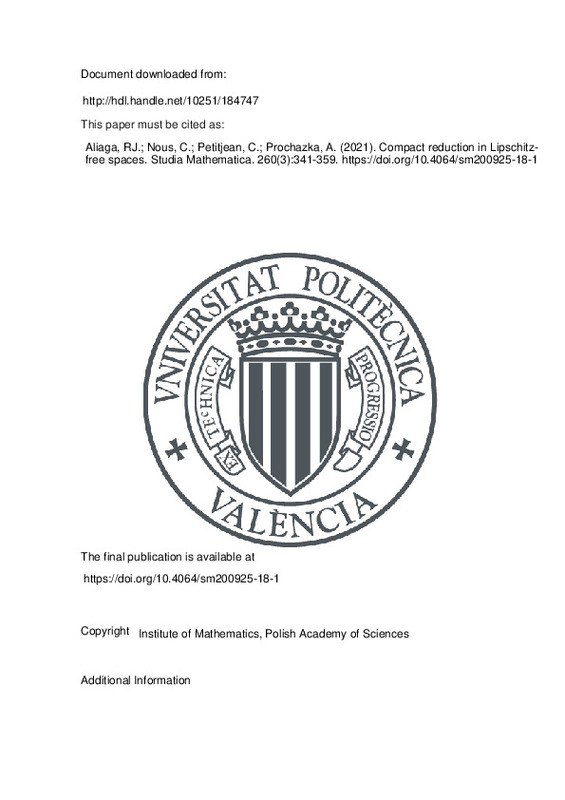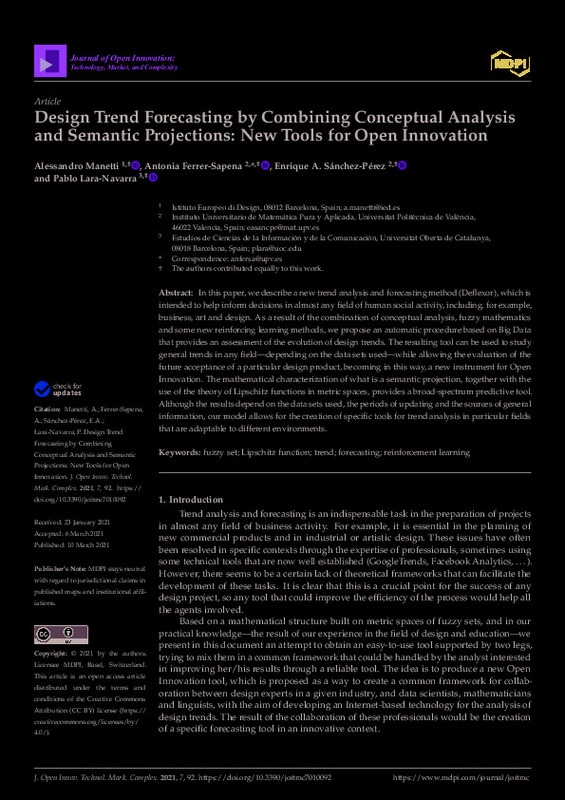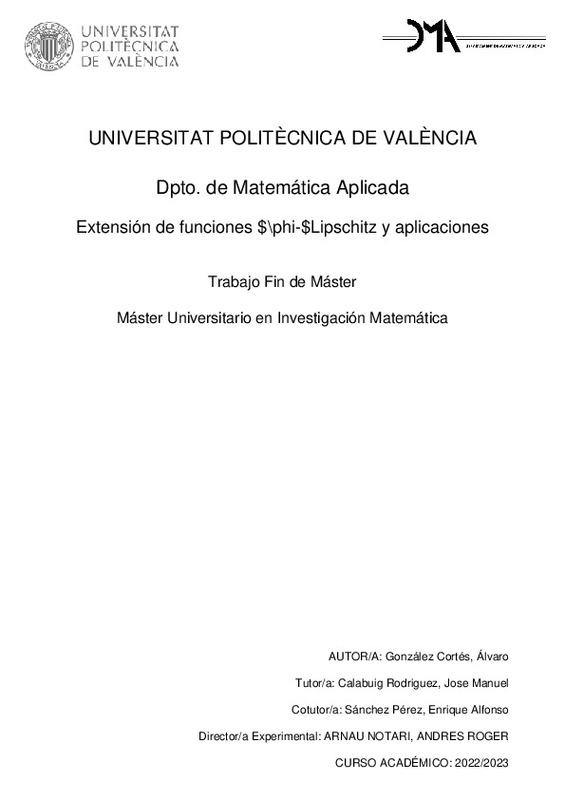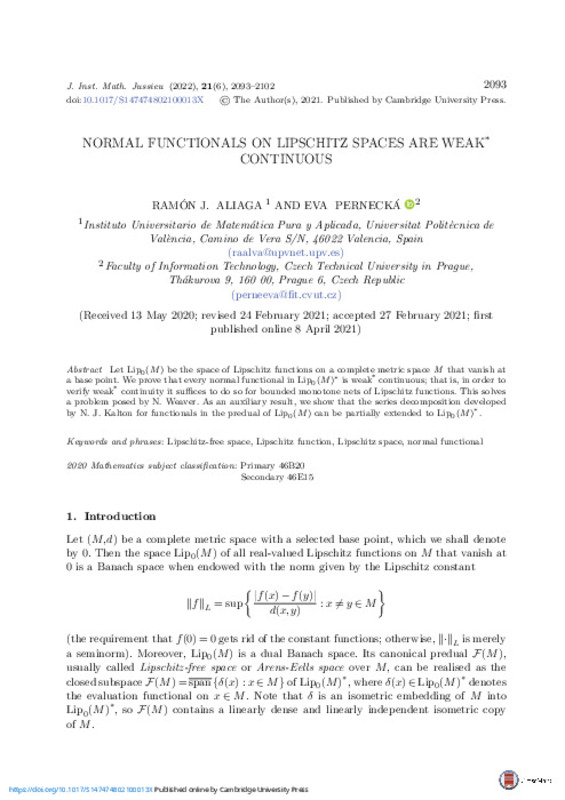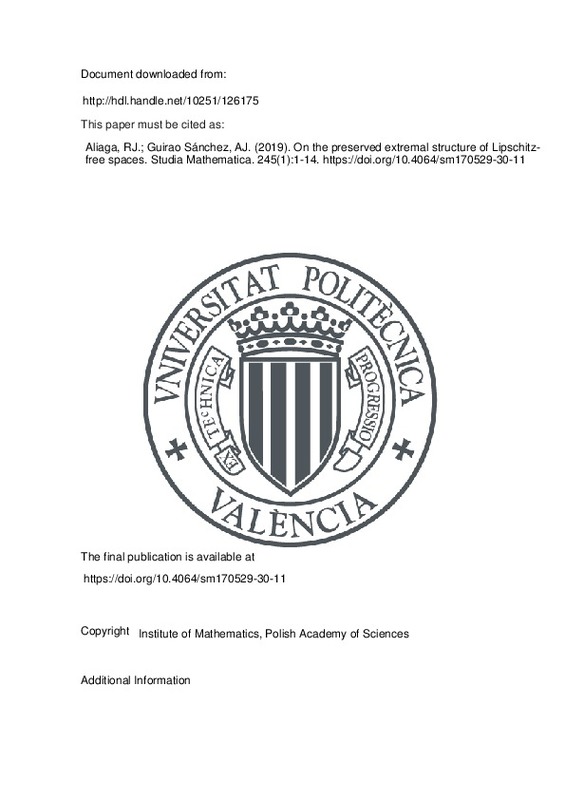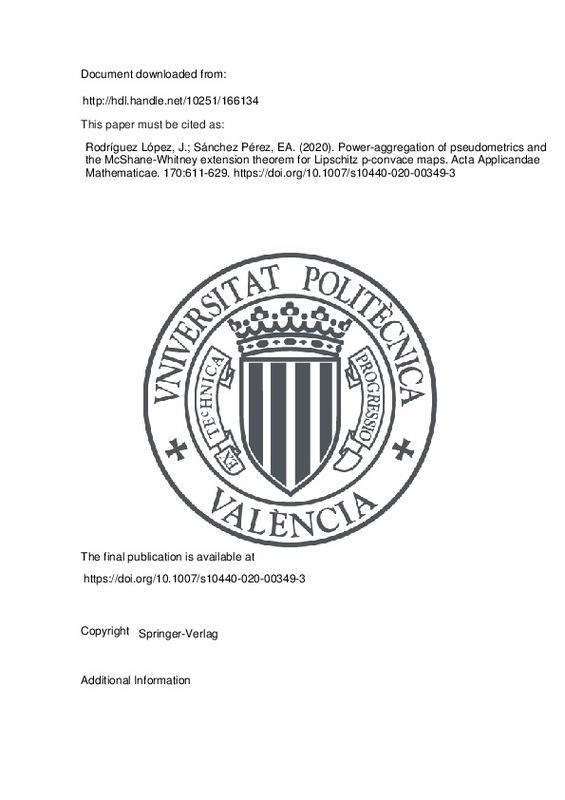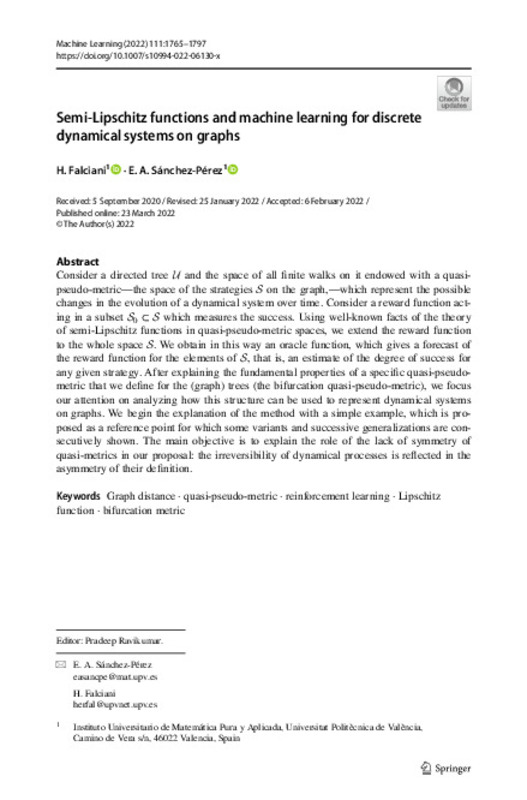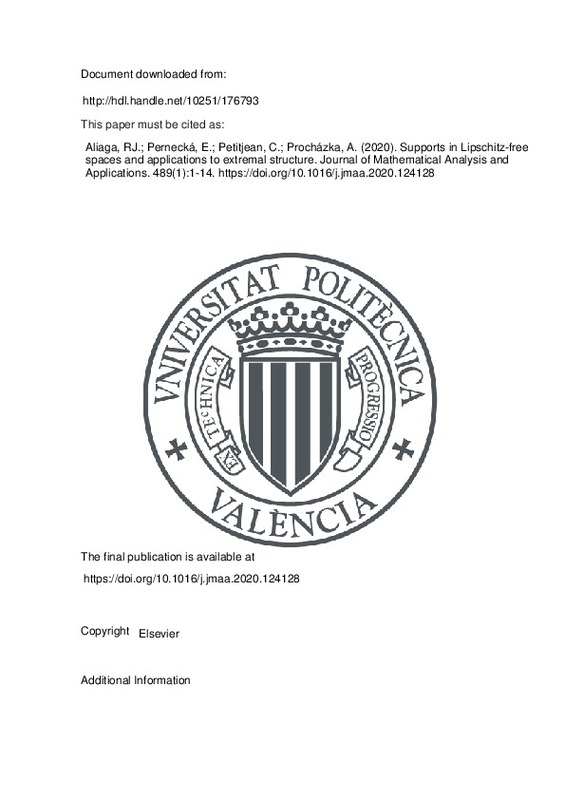

Listar por palabra clave "Lipschitz function"
RiuNet: Repositorio Institucional de la Universidad Politécnica de Valencia
- RiuNet repositorio UPV
- :
- Listar por palabra clave
JavaScript is disabled for your browser. Some features of this site may not work without it.
Buscar en RiuNet
Listar
Mi cuenta
Ayuda RiuNet
Admin. UPV
Listar por palabra clave "Lipschitz function"
Mostrando ítems 1-8 de 8
-
Aliaga, Ramón J.; Nous, Camille; Petitjean, Colin; Prochazka, Antonin (Institute of Mathematics, Polish Academy of Sciences, 2021)[EN] We prove a general principle satisfied by weakly precompact sets of Lip-schitz-free spaces. By this principle, certain infinite-dimensional phenomena in Lipschitzfree spaces over general metric spaces may be reduced ...
-
Manetti, Alessandro; Ferrer Sapena, Antonia; Sánchez Pérez, Enrique Alfonso; Lara-Navarra, Pablo (MDPI AG, 2021-03-10)[EN] In this paper, we describe a new trend analysis and forecasting method (Deflexor), which is intended to help inform decisions in almost any field of human social activity, including, for example, business, art and ...
-
González Cortés, Álvaro (Universitat Politècnica de València, 2023-09-21)[ES] Los teoremas clásicos de extensión de funciones reales de Lipschitz, debidos a McShane y Whitney, han encontrado numerosas aplicaciones en muchos campos, como la economía, el análisis matemático y, recientemente, en ...
-
Aliaga, Ramón J.; Pernecká, Eva (Cambridge University Press, 2022-11)[EN] Let Lip0(M) be the space of Lipschitz functions on a complete metric space M that vanish at a base point. We prove that every normal functional in Lip0(M)¿ is weak* continuous; that is, in order to verify weak* ...
-
Aliaga, Ramón J.; Guirao Sánchez, Antonio José (Institute of Mathematics, Polish Academy of Sciences, 2019)[EN] We characterize preserved extreme points of the unit ball of Lipschitz-free spaces F(X) in terms of simple geometric conditions on the underlying metric space (X,d). Namely, the preserved extreme points are the ...
-
Rodríguez López, Jesús; Sánchez Pérez, Enrique Alfonso (Springer-Verlag, 2020-12)[EN] Given a countable set of families {Dk:k¿N} of pseudometrics over the same set D, we study the power-aggregations of this class, that are defined as convex combinations of integral averages of powers of the elements ...
-
Falciani, H.; Sánchez Pérez, Enrique Alfonso (Springer-Verlag, 2022-05)[EN] Consider a directed tree U and the space of all finite walks on it endowed with a quasi-pseudo-metric-the space of the strategies S on the graph,-which represent the possible changes in the evolution of a dynamical ...
-
Aliaga, Ramón J.; Pernecká, Eva; Petitjean, Colin; Procházka, Antonín (Elsevier, 2020-09-01)[EN] We show that the class of Lipschitz-free spaces over closed subsets of any complete metric space M is closed under arbitrary intersections, improving upon the previously known finite-diameter case. This allows us to ...
Mostrando ítems 1-8 de 8

Universitat Politècnica de València. Unidad de Documentación Científica de la Biblioteca (+34) 96 387 70 85 · RiuNet@bib.upv.es


